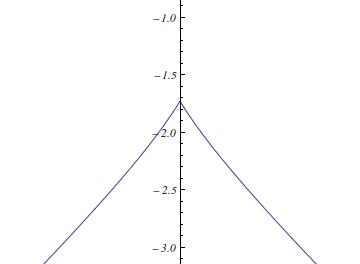With help from here, I have succeeded in plotting the equation z = -a Log[2 Cosh[(2 f[x] + x)/a]], with f[x] being defined by the transcendental equation f[x] = Tanh[(2 f[x] + x)/a. However, for a < 2 each x in the vicinity of 0 has up to three possible values of y as a soultion.
f[x_] := y /. FindRoot[y == Tanh[(2 y + x)/1.5], {y, 0}]
p1 = Plot[-1.5 Log[2 Cosh[(2 f[x] + x)/1.5]], {x, -1.5, 1.5}];
Show[p1, PlotRange -> {{-1.5, 1.5}, {-3.1, -0.9}}, AspectRatio -> Automatic]
I know that y = Tanh[(2 y + x)/1.5] is supposed to have a jump-discontinuity for x = 0, and be one-to-one everywhere else.
So, how do I make Mathematica use only the minimum values of
y = Tanh[(2 y + x)/1.5] for x ∈ [-∞, 0]
and maximum values of
y = Tanh[(2 y + x)/1.5] for x ∈ [0, ∞]
when I plot
z = -1.5 Log[2 Cosh[(2 y + x)/1.5]]
?

